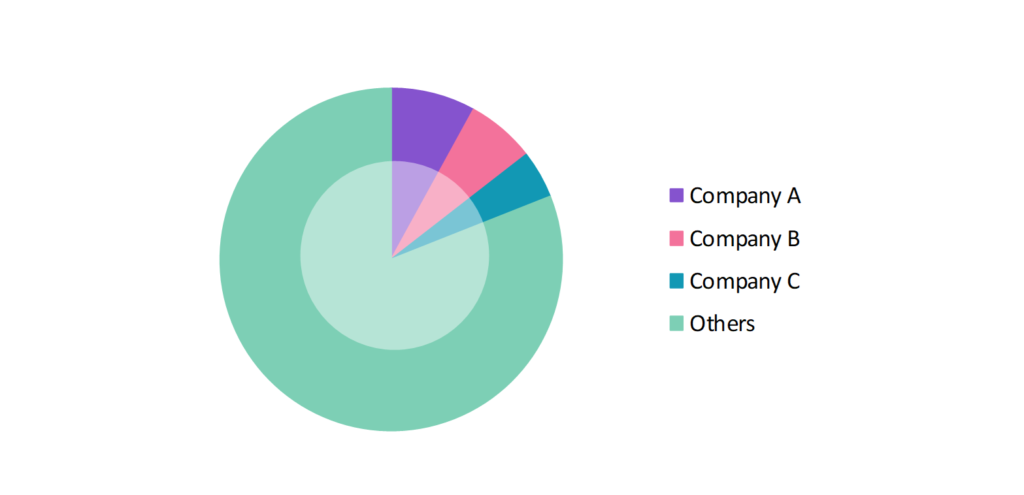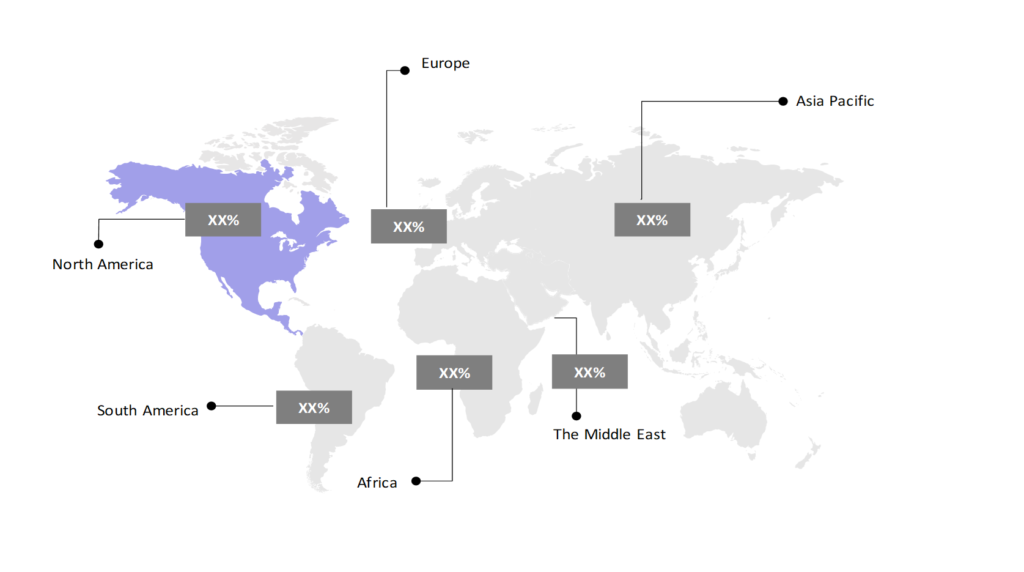Service Integration and Management Market Analysis: Growth, Size, Share & Future Trends (2024-2029)
The market report offers a detailed analysis segmented by Component (Solutions, Services); by Vertical (Banking, Financial Services, and Insurance (BFSI), IT & ITeS, Telecommunications, Retail & Consumer Goods, Others); by Geography (North America, South America, Asia Pacific, Europe, The Middle East, Africa).
Outlook

- The service integration and management market is estimated to be at USD 5,841.67 Mn in 2025 and is anticipated to reach USD 7,677.77 Mn in 2030.
- The service integration and management market is registering a CAGR of 5.62% during the forecast period 2025-2030.
- Service Integration and Management (SIAM) is a framework for governing, managing, and coordinating multiple third-party service providers within an organization. The global SIAM market is growing due to increased demand for multi-vendor IT services and cloud solutions.
Request a free sample.
Ecosystem

- The participants in the global service integration and management industry offer comprehensive SIAM solutions designed to cater to businesses managing multi-vendor environments across different industries.
- These companies primarily focus on investing in product innovation to develop advanced SIAM tools that incorporate artificial intelligence (AI), along with strategic collaborations and acquisitions to enhance their SIAM offerings and maintain a competitive edge in the market.
- Several important entities in the service integration and management market include HCL Technologies Ltd.; HPE Co.; Infosys Ltd.; LTIMindtree Ltd.; Capgemini SE; and others.
Ask for customization.
Findings
| Attributes | Values |
|---|---|
| Historical Period | 2019-2023 |
| Base Year | 2024 |
| Forecast Period | 2025-2030 |
| Market Size (2025) | USD 5,841.67 Mn |
| Market Size (2030) | USD 7,677.77 Mn |
| Growth Rate | 5.62% CAGR from 2025 to 2030 |
| Key Segments | Component (Solutions, Services); Vertical (BFSI, IT & ITeS, Telecommunications, Retail & Consumer Goods, Others); Geography (North America, South America, Asia Pacific, Europe, The Middle East, Africa) |
| Key Vendors | HCL Technologies Ltd.; HPE Co.; Infosys Ltd.; LTIMindtree Ltd.; Capgemini SE |
| Key Countries | The US; Canada; Mexico; Brazil; Argentina; China; India; Japan; The UK; Germany; Italy; UAE; Saudi Arabia; South Africa |
| Largest Market | North America |
Get a free quote.
Trends
- Focus on Vendor Performance: Organizations are increasingly focusing on monitoring vendor performance and ensuring compliance with service level agreements (SLAs). This trend has led to the development of SIAM frameworks that include performance management tools, enabling businesses to track vendor efficiency and ensure alignment with organizational goals. In 2022, Atos developed a vendor performance management tool integrated within its SIAM framework to monitor third-party services’ adherence to SLAs.
- Shift Toward Cloud-based SIAM Models: Companies are increasingly adopting cloud-based SIAM models, which offer flexibility, scalability, and cost-efficiency. As businesses transition to cloud computing, the demand for cloud-based SIAM solutions is rising. These solutions provide better control and visibility over service integration across cloud environments, enhancing service management.
- Automation in Service Management: The use of automation in service management processes is becoming a trend in SIAM. Automation tools streamline vendor management, reduce manual errors, and enhance efficiency in service delivery. This trend is driven by the need to improve operational agility, reduce costs, and improve service quality.
Speak to analyst.
Catalysts
- Demand for Enhanced Customer Experience: The coordination of multiple vendors through SIAM enhances the efficiency of service delivery, resulting in better customer experience and service satisfaction. In highly competitive industries, the ability to offer seamless services is critical to customer retention, driving the need for efficient SIAM solutions. In 2023, HCL Technologies enhanced its SIAM platform to prioritize customer experience through improved vendor coordination and service management.
- Increasing Complexity of Multi-Vendor IT Environments: The growing complexity of IT ecosystems, driven by the widespread use of multiple third-party vendors, has created a demand for structured service integration frameworks like SIAM. Organizations that rely on multiple service providers need SIAM to ensure consistent service delivery, simplify management, and reduce inefficiencies.
- Need for Improved Governance: SIAM provides organizations with better governance over third-party services, enabling them to manage risks such as non-compliance, security breaches, and service disruptions. With stricter regulations and an increased focus on data privacy, businesses are adopting SIAM frameworks to ensure that vendors adhere to regulatory requirements.
Inquire before buying.
Restraints
- High Costs of Implementing SIAM: Implementing a SIAM framework involves significant costs, especially for businesses with complex IT ecosystems. The initial investment in tools, technologies, and skilled personnel can be a barrier to adoption, particularly for small and medium-sized enterprises (SMEs).
- Integration Complexity Across Different Service Providers: Managing integration across multiple service providers is one of the biggest challenges in the SIAM market. Each provider has different processes, tools, and technologies, making seamless integration difficult. This challenge can lead to delays in service delivery and reduced efficiency in vendor management.
- Resistance to Change in Organizational Culture: Adopting SIAM requires a cultural shift within organizations, as it necessitates changes in the way service management is handled. Resistance to change from internal teams and service providers can slow down SIAM implementation and reduce its effectiveness.
Personalize this research.
Hotspot

Explore purchase options.
Table of Contents
| 1. Introduction 1.1. Research Methodology 1.2. Scope of the Study 2. Market Overview / Executive Summary 2.1. Global Service Integration and Management Market (2019 – 2023) 2.2. Global Service Integration and Management Market (2024 – 2030) 3. Market Segmentation 3.1. Global Service Integration and Management Market by Component 3.1.1. Solutions 3.1.2. Services 3.2. Global Service Integration and Management Market by Vertical 3.2.1. BFSI 3.2.2. IT & ITeS 3.2.3. Telecommunications 3.2.4. Retail & Consumer Goods 3.2.5. Others 4. Regional Segmentation 4.1. North America 4.1.1. The US 4.1.2. Canada 4.1.3. Mexico 4.2. South America 4.2.1. Brazil 4.2.2. Argentina 4.2.3. Rest of South America 4.3. Asia Pacific 4.3.1. China 4.3.2. India 4.3.3. Japan 4.3.4. Rest of Asia Pacific 4.4. Europe 4.4.1. The UK 4.4.2. Germany 4.4.3. Italy 4.4.4. Rest of Europe 4.5. The Middle East 4.5.1. UAE 4.5.2. Saudi Arabia 4.5.3. Rest of the Middle East 4.6. Africa 4.6.1. South Africa 4.6.2. Rest of Africa 5. Value Chain Analysis of the Global Service Integration and Management Market 6. Porter Five Forces Analysis 6.1. Threats of New Entrants 6.2. Threats of Substitutes 6.3. Bargaining Power of Buyers 6.4. Bargaining Power of Suppliers 6.5. Competition in the Industry 7. Trends, Drivers and Challenges Analysis 7.1. Market Trends 7.1.1. Market Trend 1 7.1.2. Market Trend 2 7.1.3. Market Trend 3 7.2. Market Drivers 7.2.1. Market Driver 1 7.2.2. Market Driver 2 7.2.3. Market Driver 3 7.3. Market Challenges 7.3.1. Market Challenge 1 7.3.2. Market Challenge 2 7.3.3. Market Challenge 3 8. Opportunities Analysis 8.1. Market Opportunity 1 8.2. Market Opportunity 2 8.3. Market Opportunity 3 9. Competitive Landscape 9.1. HCL Technologies Ltd. 9.2. HPE Co. 9.3. Infosys Ltd. 9.4. LTIMindtree Ltd. 9.5. Capgemini SE 9.6. Company 6 9.7. Company 7 9.8. Company 8 9.9. Company 9 9.10. Company 10 |
Know the research methodology.
Service Integration and Management Market – FAQs
1. What is the current size of the service integration and management market?
Ans. In 2025, the service integration and management market size is USD 5,841.67 Mn.
2. Who are the major vendors in the service integration and management market?
Ans. The major vendors in the service integration and management market are HCL Technologies Ltd.; HPE Co.; Infosys Ltd.; LTIMindtree Ltd.; Capgemini SE.
3. Which segments are covered under the service integration and management market segments analysis?
Ans. The service integration and management market report offers in-depth insights into Component, Vertical, and Geography.
